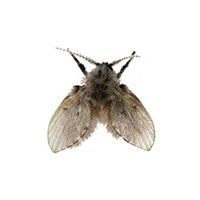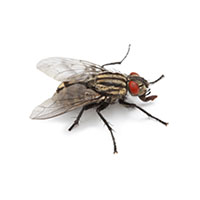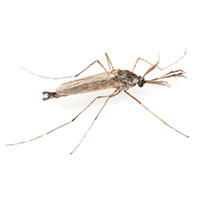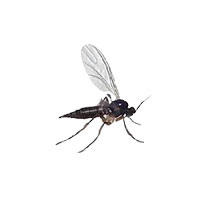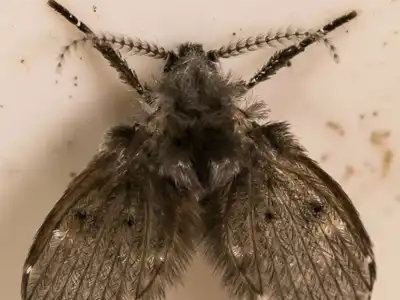
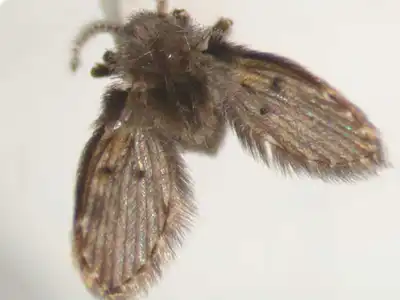
Moth and Drain Flies Diet
The larval and pupal stages feed on algae, fungi, bacteria, and sludge. Since the adults lack the mouthparts necessary for chewing and ingesting solid foods, they feed on liquefied carbohydrates such as nectar.
Moth and Drain Flies Habitat
As their name suggests, drain flies are commonly found in clogged drains and in the organic material in drains and sinks, usually in kitchens and bathrooms. The insects breed and spend the early stages of their life cycle in the organic residue attached to the walls of drains. They may also breed in dirty garbage containers or septic tanks.
Adults are poor fliers and after emergence from drains, they are found in great numbers crawling or resting on walls or flying weakly near the breeding site. Adults are more active at night and can be seen hovering near the breeding site. During the day, they rest on vertical surfaces indoors and in shady, protect areas near water outside. Clogged gutters, storm drains, and birdbaths (where decomposing organic matter accumulates) make ideal outdoor habitats for drain flies.
Moth and Drain Flies Life Cycle
Drain flies breed and lay 30 to 100 eggs in decaying organic material, which after hatching, the larvae rely on for a food source. The drain/moth flies spend about two weeks as larvae before pupating. The pupal stage lasts about a day and a half, with drain flies emerging as adults upon completion. The developmental time from egg to adult is one to four weeks. Adults typically live for an additional two weeks.
Moth and Drain Flies Damage & Signs of Infestation
The presence of drain/moth flies generally becomes an annoyance when they breed in the liquids found in drains, dirty garbage containers, and septic tanks. Drain flies can cause serious infestation problems when an indoor breeding site is overlooked and permitted to endure. When drain flies increase in numbers indoors, unsightly congregations of insects often appear around bathtubs, sinks, floor drains, light fixtures, and windows. Though not typically known as transmitters of disease, drain flies breed in unsanitary conditions and have the potential to transfer the bacteria and microorganisms found in drains to other household surfaces and food. Commercially, they are a problem when they breed in large numbers in the filter beds of sewage-treatment plants.
Moth and Drain Flies Prevention & Control
Moth & Drain Flies Prevention
Preventing a drain fly infestation primarily involves eliminating the environments in which the insects like to breed. Since drain flies breed in areas with excess moisture and residual organic debris, the following drains should be regularly cleaned:
- Bathtubs
- Sinks
- Toilets
- Basement and garage floors
Clogged gutters and damaged septic lines should also be promptly addressed.
Moth & Drain Flies Control
A Batzner Service Specialist will determine and remove the source of breeding to eliminate infestations. Drains will be cleaned and properly treated to reduce future populations. Eliminating the moisture source that sustains them is also an important control method. Outdoors, they can be controlled by doing the following:
- Remove harborage areas and storing items off the ground, including debris and rotting wood
- Remove particles of food and concentrations of dust and lint that could serve as a food source
- Seal and caulk gaps and entry points into buildings around siding, windows, doors, pipes, and wires
- Avoid overwatering gardens and plants.
If a moth or drain fly infestation becomes too severe, count on a professional pest management service to take care of the problem knowledgeably and successfully.
Need help with Moth & Drain Flies?
We'll call you! Leave your information below.

